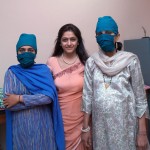I’ve begun working on a new project with my long-time collaborator, my sister Wanda Ronner. If you’ve read our previous books, you may know that I’m the historian and she’s the physician, and that we’ve now spent more than two decades reading, writing, and talking about reproductive matters in their myriad medical, cultural, ethical, and historical contexts.
For our new book, which one family member teasingly calls “volume three in the infertility trilogy,” we’re turning our attention to the recent history of infertility, reproductive medicine, and assisted reproductive technologies. Its working title is “Beyond Infertility” and our goal is to provide a long-range perspective on the unprecedented ways – deeply unsettling to some and profoundly liberating to others – whereby families can be created by means of the new reproductive technologies. Although we’re concentrating on the United States, we’ll situate this country’s experiences within what has become a global transformation in reproductive practices. We start the book at around 1970, because that was when it became clear that babies conceived through in vitro fertilization could be reasonably anticipated to be born within the next decade, and we will end in the present.

Robert Edwards (l), Jean Purdy, and Patrick Steptoe with Louise Brown, the world’s first IVF baby, just after her birth in 1978
“Beyond Infertility” will weave together the medical, cultural, social, and political histories of infertility and assisted reproduction. It will also pay particular attention to egg and embryo donation, gestational surrogacy, and fertility preservation.
Given our areas of expertise in the history of women, gender and the family (Margaret) and in obstetrics/gynecology and women’s health (Wanda), we believe we can approach the subject in a distinctive way, crossing the boundaries between the humanities and medicine and providing a much-needed historical perspective on a subject of enormous contemporary significance.
